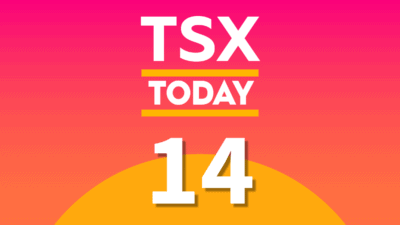The non-prime lender goeasy (TSX:GSY) is in a risky business, but it has grown well. However, the rising interest rates and the market downturn pulled the stock down 45% in a year. Is this dip temporary? Should you go easy on goeasy and hold it throughout a recession, hoping it revives when the economy recovers?
What is good for goeasy’s business?
Giving short-term loans to Canadians who are rejected loans from banks helps goeasy earn a high yield of 39% on its loan portfolio. This yield is the total interest goeasy earned on overall loans after adjusting for defaults. That’s a good yield, given that its weighted average cost of borrowing was 4.9% in the second quarter. The wider the gap, the higher the operating margin (35.3%).
While high interest means high income, it also signals a higher risk of default. goeasy maintains a balance between the interest it charges and the loan default. For this, the key metric is the net charge-off rate, which states the percentage of the loan that the company cannot recover and puts in bad debt.
goeasy has a target range of 8.5-10.5% for fiscal 2022, and its second-quarter net charge-off rate of 9.3% was within the target range. It is a good sign, because goeasy manages its risk by setting aside some allowance for credit losses. The loan-loss provision rate was 7.68% for the second quarter. A reasonably high consumer loan yield and the net charge-off rate within the targeted range show the company’s fundamentals are healthy.
Why is goeasy stock falling?
goeasy stock is falling because its previous year’s second-quarter metrics are better than metrics for the second quarter of 2022. Last year, many people paid off their loans from the stimulus money and took lower loans ($379 million loan origination). This reduced goeasy’s net charge-off rate to 8.2%, despite a 42.8% consumer loan yield. These metrics were too good compared to the pre-pandemic numbers; the net charge-off rate for 2019 13.3%.
But the party was over when the Canadian government ended fiscal stimulus at the end of September 2021. From there began goeasy stock’s decline. The central bank is increasing interest rates and pulling back the stimulus money, making borrowing expensive. The first half of 2022 saw an approximately 70% surge in loan origination to $628 million because of pent-up consumer demand. Higher loan volume increases goeasy’s revenue by 30%.
But the loan origination growth could slow in the second half of 2022, as inflation slows consumer demand. goeasy is banking on its new auto financing business for growth. But recessionary pressure could delay this growth, as the automotive industry grapples with supply issues. One of the largest auto companies, Ford Motor, warned of a US$1 billion inflation bill and delay in deliveries due to a supply shortage of auto parts. Moreover, the World Bank warned of a high risk of a global recession in 2023.
All these numbers are fine, but as a shareholder, what should you expect from this stock?
What to expect from the stock
goeasy is a small-cap stock that pays regular dividends. At the same time, the company is growing its business by expanding into auto finance. It is gradually enhancing the credit profile of its customers and aims to bring them to the prime market. This growth is driving goeasy’s stock price, as it captures market share. The stock has surged 1,500% in 10 years, converting $2,000 to $30,000, excluding dividends.
A recession could increase goeasy’s net charge-off rate, but it has enough liquidity ($1.09 billion) to fund organic growth till mid-2025. This means there is more downside for the stock in a bear market but with the scope for a bounce back when the economy recovers.
If you bought the stock in 2021, keep holding it. You can invest a small amount every month through the next eight to 12 months of decline and reduce your purchase price. This way, you can enhance your upside in a bounce back.
 Stock Up Sale
Stock Up Sale







